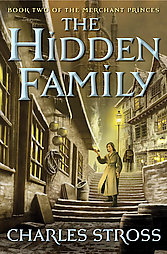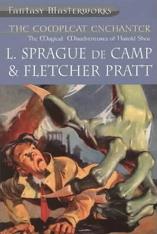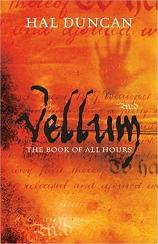
The Hidden Family
Charlie Stross
309 pages
published in 2005
The Merchant Princes series is Charlie’s attempt at writing a fat fantasy series. Unfortunately, the rules changed shortly after he had written the first book in the series, with bookstores no longer wanting fat fantasies. Hence what should’ve been the first book was split in two, The Family Trade and The Hidden Family each hastily rewritten to stand on their own. This wasn’t entirely succesful, especially in the first book; the best way to read these two novels is back to back and pretend it’s still one novel. As it is, you have The Family Trade setting up some plot threads which are only resolved in The Hidden Family; read them on their own and you only have half a novel. A pity, but nothing to be done about that.
In The Family Trade we met Miriam Bernstein, journalistic investigator for a IT/biotech trade journal, who stumbled on something far greater than the already impressive whitewashing operation she tought she had uncovered. She’s fired, her house is broken into and she’s almost kidnapped, but then she discovers she can transport herself to a parallel world. It turns out she’s a lost member of a family of worldwalkers, who were also behind that whitewashing operation that got her into trouble in the first place. Though she’s understandably reluctant to do so, Miriam slowly accepts her new family and her own role in keeping the family business –smuggling drugs absolutely undetectably into the United States by running it through their homeworld to make money to buy medcines and luxury goods not available there and selling those to the nobility– afloat. Once she does, she sees some opportunities for drastically modernising the family; The Hidden Family takes up the rest of the story.



